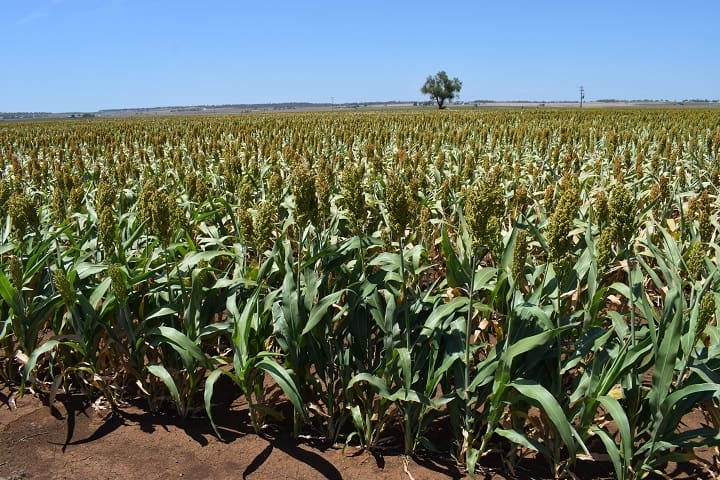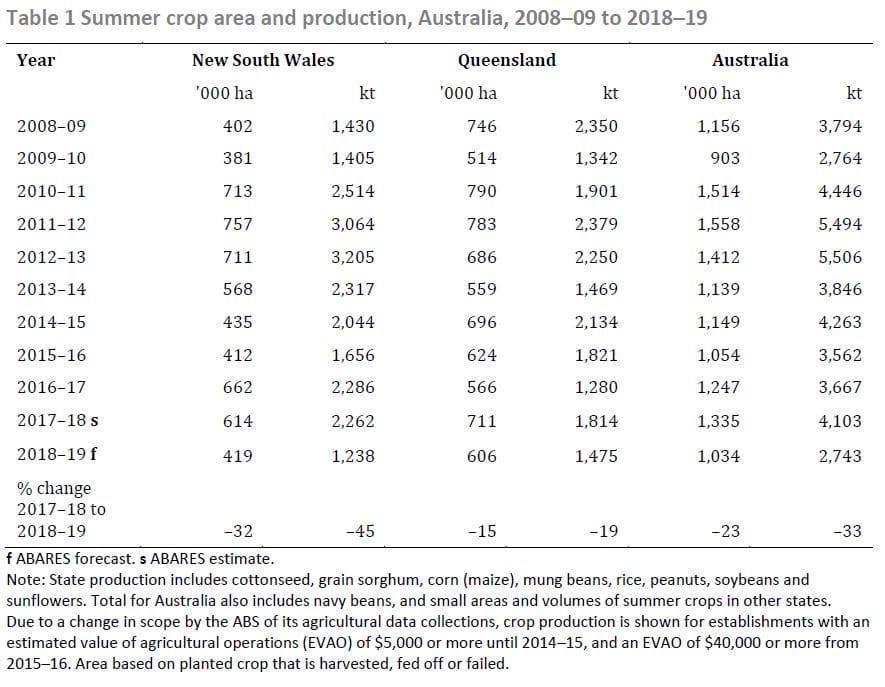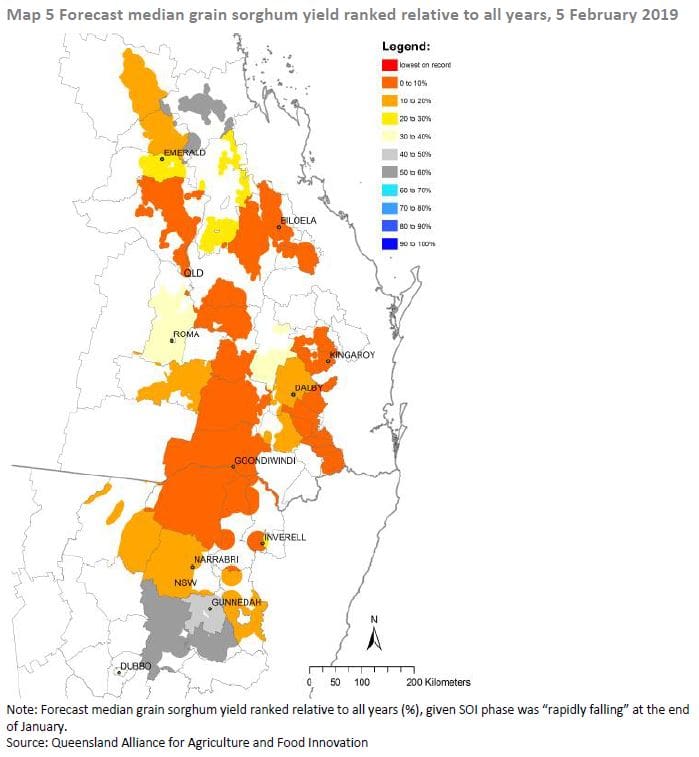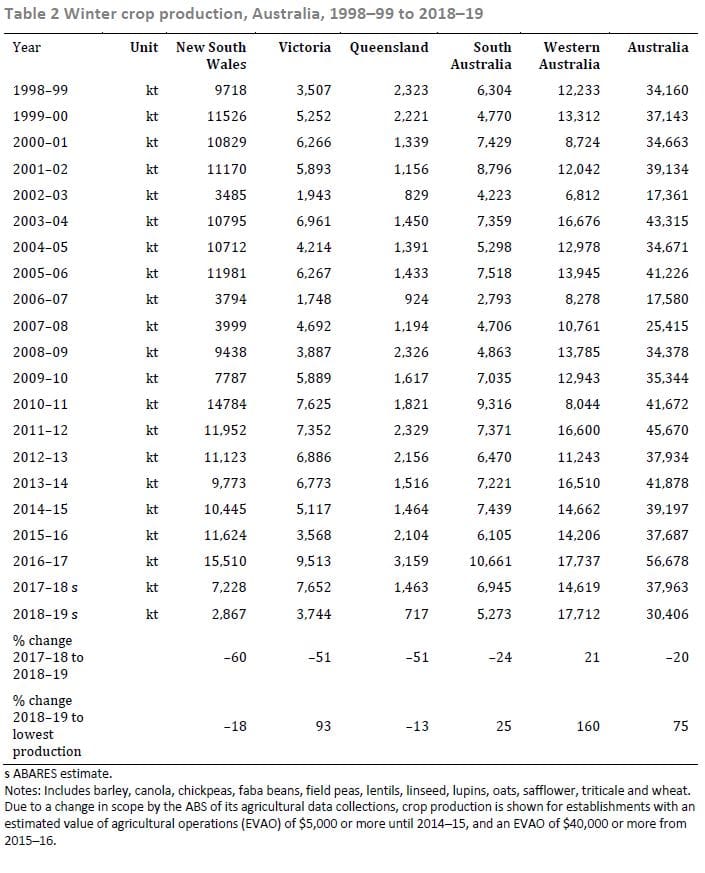DRIER and warmer than average seasonal conditions in cropping regions in Queensland and northern New South Wales during December and January reduced prospects of summer crop production in 2018–19, according to the latest Australian Crop Report.
ABARES acting executive director Peter Gooday said the unfavourable seasonal conditions curtailed planting of dryland summer crops in the latter part of the planting window, lowered soil moisture levels and reduced yield prospects of dryland crops.
“Total area planted to summer crops is estimated to have decreased by 23 per cent in 2018–19 to around 1.0 million hectares, mainly because of falls in area planted to cotton and rice. Production is forecast to fall by 33 per cent to around 2.7 million tonnes,” he said.
According to the Bureau of Meteorology climate outlook for March to May 2019 (issued 14 February 2019), rainfall in most cropping regions in Queensland and northern New South Wales is more likely to be below average than above average. This likelihood is generally stronger in Queensland.
“Production of all the major summer crops is forecast to fall—cotton by 44 per cent to 581,000 tonnes of cotton lint and 821,000 tonnes of cottonseed, grain sorghum by 9 per cent to 1.3 million tonnes, and rice by 83 per cent to 104,000 tonnes,” Mr Gooday said.
“Area planted to grain sorghum is estimated to have risen marginally in 2018–19 to 537,000 hectares. However, late season planting was minimal because of low soil moisture levels and unfavourable seasonal conditions in Queensland.
“Area planted to cotton is estimated to have fallen by 44 per cent to 280,000 hectares due to below average rainfall in 2018 into irrigation dams and low levels of soil moisture.”
“Area planted to rice is estimated to have fallen by 83 per cent to 10,000 hectares because of low water allocations and high water prices in southern New South Wales.”
Winter crop decrease
With harvesting of 2018–19 winter crops largely complete, Mr Gooday said a good finish in Western Australia provided good news for WA cropping farmers.
“Better than expected yields boosted production of 2018–19 winter crops in Western Australia to be above forecasts published in the December edition of Australian Crop Report,” he said.
However, crop yields in other states are estimated to have been well below average.
Mr Gooday said total Australian winter crop production was estimated to have decreased by 20pc in 2018–19 to 30.4Mt.
This estimate represents a 4pc upward revision to the December 2018 Australian crop report forecast, driven by the better than expected production in Western Australia.
“Production of all major winter crops is estimated to have fallen—wheat by 19 per cent to 17.3 million tonnes, barley by 7 per cent to 8.3 million tonnes and canola by 41 per cent to 2.2 million tonnes,” he said.
“Amongst other crops, chickpea production is estimated to have fallen by 76 per cent to 281,000 tonnes and oats production by 21 per cent to 888,000 tonnes.”
The winter crop area is estimated to have fallen by 18pc in 2018–19 to 18.2 million hectares.
Source: ABARES
The February 2019 Australian Crop Report:
agriculture.gov.au/abares/research-topics/agricultural-commodities/australian-crop-report
Grain Central: Get our free cropping news straight to your inbox – Click here





HAVE YOUR SAY